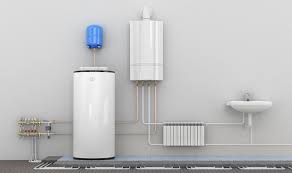Introduction
Water heaters are essential for modern living, providing hot water for showers, cleaning, and other daily tasks. With the variety of options available, choosing the right water heater can be a bit overwhelming. Understanding how tank and tankless water heaters work can help you make an informed decision that suits your household needs.
Types of Water Heaters
When it comes to water heaters, there are two main types: traditional tank water heaters and tankless water heaters. Each has its own set of features and benefits, which we will explore in detail.
How Traditional Tank Water Heaters Work
Basic Operation
Traditional tank water heaters, also known as storage water heaters, store a large volume of water in a tank. The water is heated continuously, ensuring that you have a ready supply of hot water whenever you need it. The tank is typically insulated to maintain the temperature of the water.
Components of a Tank Water Heater
A standard tank water heater consists of several key components:
Tank: Holds the water.
Heating Element: Located inside the tank, it heats the water.
Thermostat: Regulates the temperature of the water.
Anode Rod: Prevents corrosion of the tank.
Pressure Relief Valve: Ensures safety by releasing excess pressure.
Advantages and Disadvantages
Advantages:
Lower initial cost compared to tankless models.
Simple installation process.
Provides a large volume of hot water on demand.
Disadvantages:
Higher energy consumption due to continuous heating.
Larger space requirement for installation.
Limited hot water supply if multiple outlets are used simultaneously.
How Tankless Water Heaters Work
Basic Operation
Tankless water heaters, also known as on-demand water heaters, heat water only when needed. When you turn on a hot water faucet, cold water flows through the unit, which heats it using electric coils or a gas burner. This method eliminates the need for a storage tank.
Components of a Tankless Water Heater
Key components include:
Heating Elements: Either electric or gas-powered, they heat the water as it passes through.
Flow Sensor: Detects the flow of water and activates the heating elements.
Thermostat: Adjusts the temperature of the water.
Ventilation System: For gas-powered units, to expel exhaust gases.
Advantages and Disadvantages
Advantages:
Energy-efficient, as water is heated only on demand.
Saves space due to compact design.
Provides a continuous supply of hot water.
Disadvantages:
Higher initial cost compared to tank heaters.
May require modifications to existing plumbing and electrical systems.
Can have a slower flow rate, which may affect simultaneous use.
Comparing Tank and Tankless Water Heaters
Energy Efficiency
Tankless water heaters generally have higher energy efficiency because they eliminate the need for continuous heating. However, tank heaters have improved over time with better insulation and more efficient heating elements.
Cost of Operation
Tankless heaters can reduce energy bills due to their on-demand heating. Tank heaters, on the other hand, have a higher energy consumption rate due to maintaining a large volume of hot water.
Space Requirements
Tankless units are much smaller and can be installed in tighter spaces, making them ideal for homes with limited space. Tank heaters require a significant amount of space for installation.
Lifespan and Maintenance
Tankless water heaters typically have a longer lifespan and require less maintenance. Tank heaters may need periodic flushing to prevent sediment buildup and corrosion.
Choosing the Right Water Heater for Your Needs
Factors to Consider
When selecting a water heater, consider factors such as your household’s hot water demand, space availability, and budget. Evaluate the initial cost versus long-term savings and the convenience of installation.
Installation Requirements
Tankless water heaters may require professional installation and potential upgrades to your home’s electrical or gas systems. Tank heaters are generally easier to install but require sufficient space.
Cost vs. Benefit Analysis
Weigh the upfront costs of tankless heaters against their long-term energy savings and efficiency benefits. Compare these with the lower initial cost of tank heaters and their ongoing energy consumption.
Conclusion
Choosing between a tank and a tankless water heater depends on your specific needs and circumstances. Both types have their own benefits and drawbacks. By considering factors like energy efficiency, space requirements, and long-term costs, you can make an informed decision that will provide comfort and efficiency for years to come.
FAQs
What are the key differences between tank and tankless water heaters?
Tank water heaters store and continuously heat a large volume of water, while tankless heaters heat water on demand. Tankless models are generally more energy-efficient and take up less space.
How long do tank and tankless water heaters typically last?
Tank water heaters usually last between 10 to 15 years, while tankless water heaters can last 20 years or more with proper maintenance.
Are tankless water heaters more energy-efficient than tank heaters?
Yes, tankless water heaters are generally more energy-efficient because they only heat water as needed, reducing energy waste.
What are the common maintenance tasks for each type of water heater?
Tank heaters require periodic flushing to remove sediment, while tankless heaters need regular descaling to prevent mineral buildup.
Can I install a tankless water heater in my existing home?
Yes, but you may need to upgrade your electrical or gas systems. It’s best to consult a professional to assess your home’s suitability for a tankless unit.
